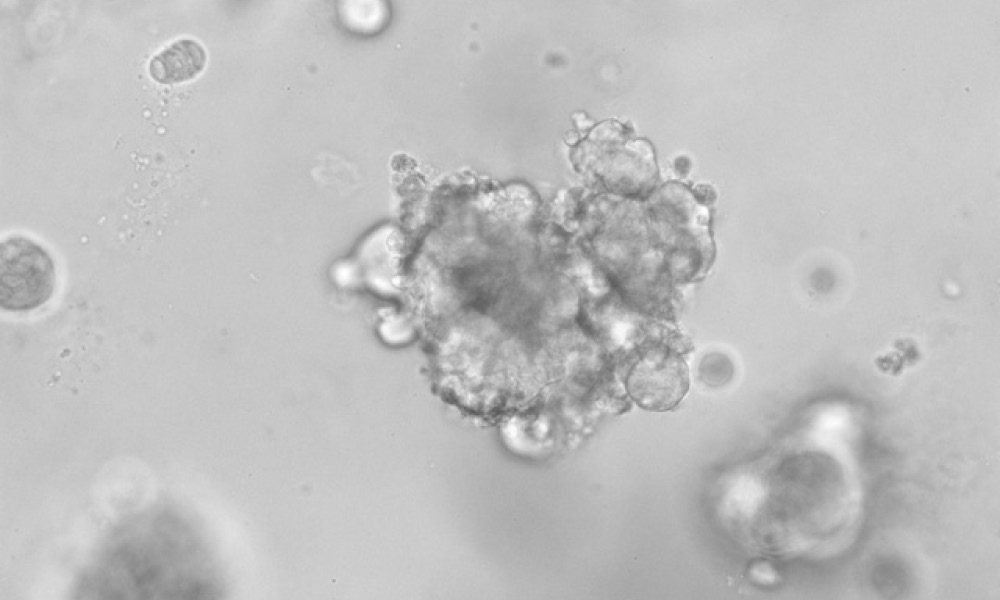Druggable Growth Dependencies and Tumor Evolution Analysis in Patient-Derived Organoids of Neuroendocrine Neoplasms from Multiple Body Sites
Cancer cell 11 December 2023
10.1016/j.ccell.2023.11.007.
A new organoid model mimics the behaviour of neuroendocrine tumours (NETs), providing a novel and invaluable tool to study them in the lab

Neuroendocrine tumours (NETs) are relatively rare tumours showing an increasing incidence and with an uncertain prognosis. While some are slow-growing, others are aggressive and challenging to treat. Unfortunately, predicting which tumours will become aggressive remains a challenge, emphasising the need for more research on the topic. However, the limited number of pre-clinical models for NETs has hindered research efforts, as these tumours are difficult to grow in culture.
Researchers from the Organoid Group at the Hubrecht Institute and the Rare Cancers Genomics Team at IARC/WHO have developed a method to grow neuroendocrine tumours (NETs) of the lung in the lab – a study that has been recently published in the journal Cancer Cell, a forum to promote major advances in cancer research and oncology. Talya Dayton, a group leader at EMBL Barcelona who aims to understand how cells behave in health and disease, co-led this study during her postdoc at the Hubrecht Institute.
During her postdoc, Dayton successfully grew patient-derived tumour organoids from low-grade pulmonary NETs for the first time. These organoids serve as a crucial resource for the field. Using them, the researchers found that some pulmonary NETs rely on a protein called epidermal growth factor (EGF) to grow. Therefore, inhibiting the EGF receptor could be a potential treatment approach for these tumours.
The surprising discovery that NETs are dependent on growth factors challenges the conventional belief that tumours are growth-factor independent. This dependence may explain why some tumours grow slowly, and it suggests that one of the ways NETs can become aggressive is by becoming growth-factor independent.
While further research is needed to confirm these findings, they raise the possibility that patients with pulmonary NETs expressing EGFR could benefit from treatment with EGFR inhibitors. Given the common use of EGFR inhibitors for other tumours, this could significantly impact patients with pulmonary NETs.
“This work lays the foundation for the work my group is doing at EMBL Barcelona,” said Dayton. “We are using the patient-derived tumour organoid models I generated and described in this paper to better understand how NETs progress and become aggressive.”
Additionally, the team is now using tumour organoid models of aggressive neuroendocrine carcinomas to identify new therapeutic vulnerabilities in these cancers. They also plan to use this system to try and predict therapeutic strategies that can either prevent the malignant transition to aggressive disease, or reverse it.
Cancer cell 11 December 2023
10.1016/j.ccell.2023.11.007.
Looking for past print editions of EMBLetc.? Browse our archive, going back 20 years.
EMBLetc. archive